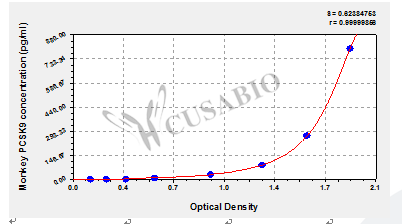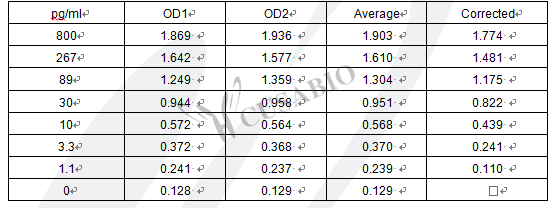Call us
301-363-4651 (Available 9 a.m. to 5 p.m. CST from Monday to Friday)
| Code | CSB-EL017647RH |
| Size | 96T,5×96T,10×96T |
| Price | Request a Quote |
| Trial Size |
24T ELISA Kit Trial Size (Only USD$150/ kit) * Sample kit cost can be deducted as a $30 credit for each 96-assay kit of the same analyte and brand you subsequently purchase within six months until depleted. More details >> Interested in a trial size? Please leave a message below.
|
| Have Questions? | Leave a Message or Start an on-line Chat |
These standard curves are provided for demonstration only. A standard curve should be generated for each set of samples assayed.


This Monkey PCSK9 ELISA Kit was designed for the quantitative measurement of Monkey PCSK9 protein in serum, plasma, tissue homogenates. It is a Sandwich ELISA kit, its detection range is 1.1 pg/mL-800 pg/mL and the sensitivity is 1.1 pg/mL.
There are currently no reviews for this product.
KEGG: mcc:717147
UniGene: Mmu.17333